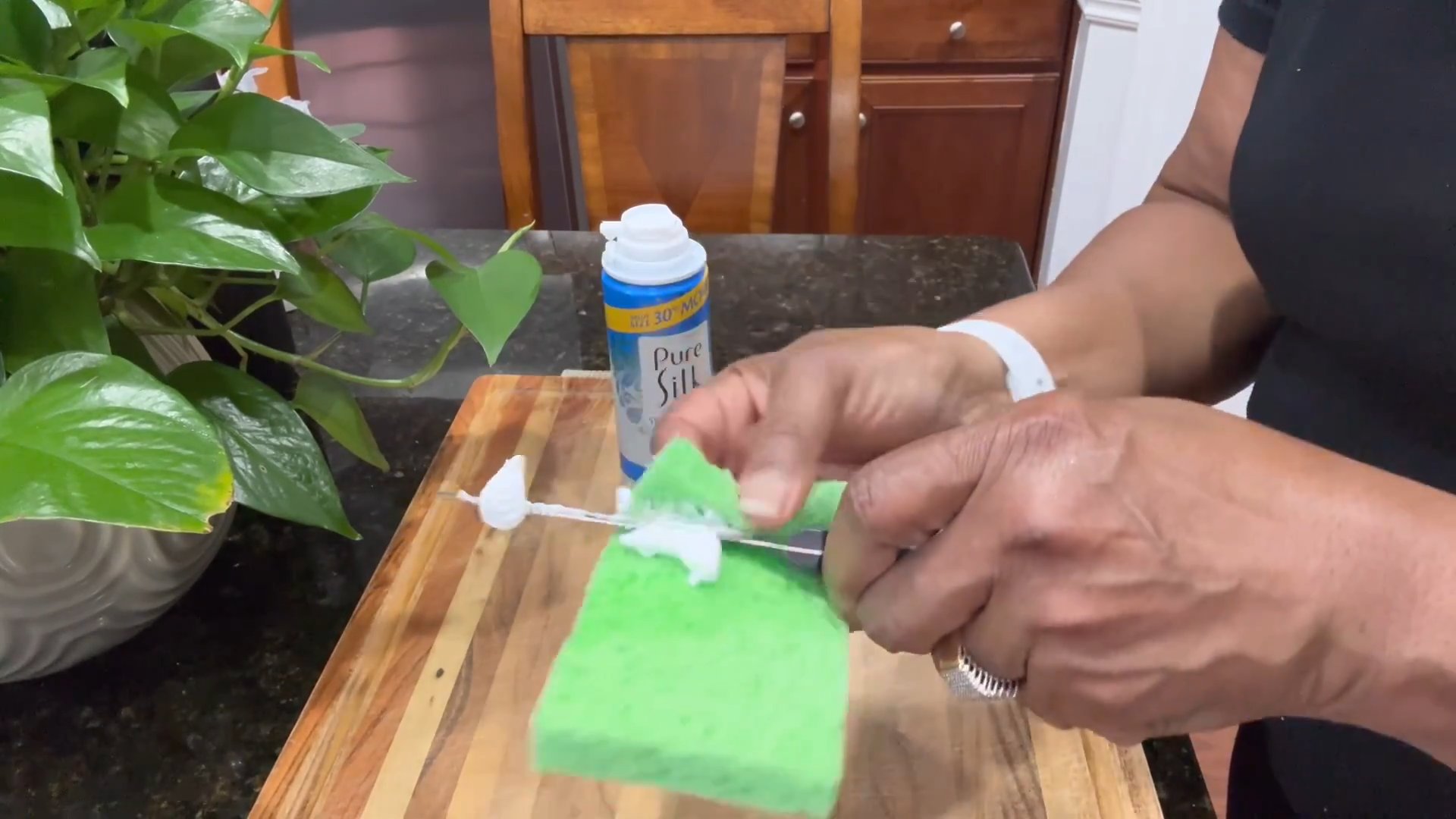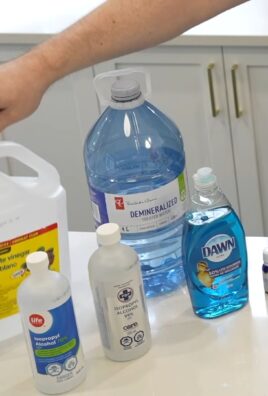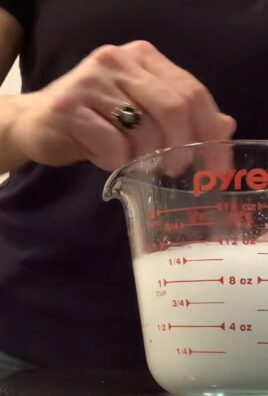Shaving foam cleaning hacks – who knew something you use to soften your beard could be your new secret weapon against grime? I’m always on the lookout for clever, budget-friendly ways to keep my home sparkling, and let me tell you, this one’s a game-changer! For generations, folks have relied on elbow grease and harsh chemicals to tackle tough cleaning jobs. But what if I told you there’s a gentler, more effective solution hiding in your bathroom cabinet?
The beauty of these shaving foam cleaning hacks lies in their simplicity and surprising effectiveness. Think about it: shaving foam is designed to lift and soften, making it perfect for loosening dirt and grime on various surfaces. From tackling stubborn stains on carpets to polishing chrome fixtures, the possibilities are endless. In this article, I’m going to share my favorite DIY cleaning tricks using shaving foam, saving you time, money, and a whole lot of scrubbing.
Why do you need these hacks? Because life’s too short to spend hours battling messes! These tips will not only simplify your cleaning routine but also introduce you to a more eco-friendly and cost-effective way to maintain a spotless home. Get ready to be amazed by the power of shaving foam!

Shaving Foam: Your Unexpected Cleaning Superhero!
Okay, friends, let’s talk about something you probably have sitting in your bathroom right now: shaving foam! Yes, you read that right. That fluffy stuff isn’t just for a smooth shave; it’s a surprisingly versatile cleaning agent. I’ve been experimenting with it for a while now, and I’m blown away by how effective it is on so many different surfaces. Forget those expensive specialty cleaners – shaving foam might just be your new go-to for tackling everyday messes.
Why Shaving Foam Works as a Cleaner
Before we dive into the hacks, let’s understand why shaving foam is such a cleaning powerhouse. The key lies in its ingredients. Most shaving foams contain:
* Surfactants: These are the workhorses of cleaning. They reduce the surface tension of water, allowing it to spread more easily and lift dirt and grime.
* Soaps: These help to emulsify oils and grease, making them easier to wash away.
* Humectants: These ingredients attract and retain moisture, which can help to loosen stubborn stains.
* Propellants: These create the foam itself, helping to distribute the cleaning agents evenly.
Because of this combination, shaving foam is gentle enough for many surfaces but strong enough to tackle a variety of messes. Just make sure you’re using the foamy kind, not the gel!
Hack #1: Sparkling Bathroom Mirrors and Shower Doors
Tired of streaks and water spots on your bathroom mirrors and shower doors? Shaving foam to the rescue! This is one of my favorite uses because it’s so quick and easy.
What you’ll need:
* Shaving foam (the foamy kind!)
* A clean, dry microfiber cloth
* Water (optional, for rinsing)
Step-by-step instructions:
1. Apply the shaving foam: Generously apply a layer of shaving foam to the entire surface of your mirror or shower door. Don’t be shy!
2. Let it sit: Allow the shaving foam to sit for a few minutes (around 5-10 minutes is ideal). This gives the surfactants time to break down any soap scum, water spots, or grime.
3. Wipe it away: Using a clean, dry microfiber cloth, wipe away the shaving foam in a circular motion. You’ll immediately notice the streaks disappearing.
4. Rinse (optional): If you prefer, you can rinse the surface with water after wiping. However, I usually find that wiping with a microfiber cloth is enough to leave a streak-free shine.
5. Buff to a shine: For an extra sparkle, buff the surface with a clean, dry microfiber cloth.
Why it works: The shaving foam gently cleans the glass and leaves behind a protective layer that helps prevent fogging. This is especially helpful for shower doors!
Hack #2: Stain Remover for Carpets and Upholstery
Spilled coffee on your carpet? Dropped food on your couch? Don’t panic! Shaving foam can often lift those stains right out.
What you’ll need:
* Shaving foam (again, the foamy kind!)
* A clean, damp cloth
* A vacuum cleaner
Step-by-step instructions:
1. Act fast: The sooner you treat the stain, the better your chances of removing it completely.
2. Apply the shaving foam: Apply a generous amount of shaving foam directly to the stain. Make sure the stain is completely covered.
3. Let it sit: Allow the shaving foam to sit on the stain for 15-20 minutes. This gives it time to penetrate the fibers and break down the stain.
4. Blot, don’t rub: Using a clean, damp cloth, gently blot the stain. Avoid rubbing, as this can spread the stain and damage the fibers. Work from the outside of the stain towards the center.
5. Repeat if necessary: If the stain is still visible, repeat steps 2-4. You may need to apply the shaving foam several times for stubborn stains.
6. Let it dry: Allow the area to air dry completely.
7. Vacuum: Once the area is dry, vacuum it thoroughly to remove any remaining residue.
Important note: Always test the shaving foam on a small, inconspicuous area of the carpet or upholstery first to ensure it doesn’t cause any discoloration or damage.
Hack #3: Polishing Chrome Fixtures
Want to bring back the shine to your chrome faucets, showerheads, and other fixtures? Shaving foam can do the trick!
What you’ll need:
* Shaving foam
* A clean, dry microfiber cloth
Step-by-step instructions:
1. Apply the shaving foam: Apply a small amount of shaving foam to the chrome fixture.
2. Rub it in: Gently rub the shaving foam over the surface of the fixture, paying attention to any areas with water spots or buildup.
3. Wipe it away: Using a clean, dry microfiber cloth, wipe away the shaving foam.
4. Buff to a shine: Buff the fixture with a clean, dry microfiber cloth to restore its shine.
Why it works: The shaving foam helps to remove water spots, soap scum, and other buildup, leaving your chrome fixtures looking like new.
Hack #4: Cleaning Stainless Steel Appliances
Fingerprints and smudges on your stainless steel appliances driving you crazy? Shaving foam can help with that too!
What you’ll need:
* Shaving foam
* A clean, dry microfiber cloth
Step-by-step instructions:
1. Apply the shaving foam: Apply a small amount of shaving foam to a clean, dry microfiber cloth.
2. Wipe the appliance: Gently wipe the appliance in the direction of the grain.
3. Wipe away residue: Use a clean part of the microfiber cloth to wipe away any remaining shaving foam residue.
4. Buff to a shine: Buff the appliance with a clean, dry microfiber cloth to restore its shine.
Important note: Always test the shaving foam on a small, inconspicuous area of the appliance first to ensure it doesn’t cause any discoloration or damage.
Hack #5: Cleaning Jewelry
This one surprised me the most! Shaving foam can actually clean your jewelry, making it sparkle again.
What you’ll need:
* Shaving foam
* A soft-bristled toothbrush
* Warm water
* A clean, dry cloth
Step-by-step instructions:
1. Apply the shaving foam: Apply a small amount of shaving foam to your jewelry.
2. Gently scrub: Using a soft-bristled toothbrush, gently scrub the jewelry to remove any dirt or grime.
3. Rinse: Rinse the jewelry thoroughly with warm water.
4. Dry: Dry the jewelry with a clean, dry cloth.
Important note: This method is best for costume jewelry or jewelry without delicate stones. Avoid using it on pearls or other porous materials.
Hack #6: Preventing Foggy Mirrors
We already touched on this with the bathroom mirror cleaning, but it deserves its own section. Shaving foam is a fantastic anti-fogging agent!
What you’ll need:
* Shaving foam
* A clean, dry microfiber cloth
Step-by-step instructions:
1. Apply the shaving foam: Apply a thin layer of shaving foam to the mirror.
2. Wipe it away: Using a clean, dry microfiber cloth, wipe away the shaving foam completely. Make sure there are no streaks or residue left behind.
Why it works: The shaving foam leaves behind a thin, invisible layer that prevents condensation from forming on the mirror, keeping it fog-free. This is perfect for bathroom mirrors, car windows, and even swimming goggles!
Hack #7: Cleaning Sticky Residue
Got sticky residue from labels, tape, or stickers? Shaving foam can help loosen it up.
What you’ll need:
* Shaving foam
* A clean cloth or sponge
Step-by-step instructions:
1. Apply the shaving foam: Apply a generous amount of shaving foam to the sticky residue.
2. Let it sit: Allow the shaving foam to sit for 5-10 minutes.
3. Wipe it away: Wipe away the shaving foam with a clean cloth or sponge. The sticky residue should come off easily.
4. Rinse (if necessary): If there’s any remaining residue, rinse the area with water.
Hack #8: Cleaning Paintbrushes
If you’re a DIY enthusiast like me, you know how important it is to keep your paintbrushes clean. Shaving foam can help!
What you’ll

Conclusion
So, there you have it! Shaving foam isn’t just for a smooth shave; it’s a surprisingly versatile and effective cleaning agent that can tackle a multitude of household messes. From banishing stubborn stains on carpets and upholstery to restoring the sparkle to your bathroom fixtures, this simple DIY trick offers a cost-effective and readily available solution to many common cleaning challenges.
Why is this a must-try? Because it’s easy, affordable, and, most importantly, it works! You likely already have a can of shaving foam tucked away in your bathroom, making it a readily accessible cleaning tool. Forget about spending a fortune on specialized cleaning products filled with harsh chemicals. Shaving foam offers a gentler, yet powerful, alternative that’s safe for your family and the environment. Plus, the pleasant scent of most shaving foams leaves your home smelling fresh and clean.
But the benefits don’t stop there. The unique texture of shaving foam allows it to penetrate deep into fibers and crevices, lifting dirt and grime that other cleaners might miss. Its gentle formula is safe for use on a variety of surfaces, from delicate fabrics to sensitive metals. And the best part? It requires minimal effort. Simply apply, let it sit, and wipe away the mess.
Looking for variations? Consider adding a few drops of your favorite essential oil to the shaving foam for an extra boost of fragrance. Lavender, lemon, or tea tree oil can add a refreshing scent and even provide additional cleaning benefits. For tougher stains, try mixing the shaving foam with a small amount of baking soda to create a powerful cleaning paste. This combination is particularly effective for removing stubborn grease and grime. You can also use different types of shaving foam. While the classic foamy kind works best, you can experiment with gel-based shaving foams for certain applications. Just be sure to test it on an inconspicuous area first to ensure it doesn’t cause any discoloration.
We’re confident that once you try these shaving foam cleaning hacks, you’ll be amazed by the results. It’s a game-changer for anyone looking for a simple, effective, and affordable way to keep their home clean and fresh.
So, ditch the expensive cleaning products and give shaving foam a try. We encourage you to experiment with these tips and discover even more ways to harness the cleaning power of this everyday product. Don’t forget to share your experiences and discoveries with us! Let us know in the comments below how you’ve used shaving foam to tackle your toughest cleaning challenges. We’re eager to hear your success stories and learn from your creative applications of this amazing DIY cleaning trick. Your tips could help others discover the magic of **shaving foam cleaning hacks** and transform their cleaning routines.
FAQ
What kind of shaving foam works best for cleaning?
The classic, foamy type of shaving foam generally works best for cleaning purposes. This is because its airy texture allows it to penetrate surfaces effectively and lift dirt and grime. While gel-based shaving foams can also be used, they may not be as effective for all cleaning tasks. Always test a small, inconspicuous area first to ensure the gel doesn’t cause any discoloration or damage. Look for shaving foams that are free of harsh chemicals or dyes, as these could potentially damage delicate surfaces. A simple, basic shaving foam is usually the best option.
Is shaving foam safe to use on all surfaces?
While shaving foam is generally safe for use on a variety of surfaces, it’s always a good idea to test it on an inconspicuous area first, especially when cleaning delicate or sensitive materials. Avoid using shaving foam on surfaces that are easily damaged by moisture, such as unfinished wood or certain types of leather. For electronics, use extreme caution and avoid getting any moisture inside the device. When in doubt, consult the manufacturer’s instructions or a professional cleaner.
Can shaving foam remove tough stains like grease or ink?
Yes, shaving foam can be surprisingly effective at removing tough stains like grease or ink. For grease stains, apply a generous amount of shaving foam to the affected area and let it sit for several minutes. Then, gently scrub the area with a soft cloth or sponge and rinse with water. For ink stains, blot the area with a clean cloth to remove any excess ink before applying the shaving foam. Let it sit for a few minutes, then gently blot again with a clean cloth. Repeat as needed until the stain is removed. For particularly stubborn stains, you can try mixing the shaving foam with a small amount of baking soda to create a more powerful cleaning paste.
Does shaving foam disinfect as well as clean?
While shaving foam can help to remove dirt and grime, it is not a disinfectant. If you need to disinfect a surface, you will need to use a separate disinfectant product. However, the act of cleaning with shaving foam can help to reduce the number of germs and bacteria on a surface, making it a valuable part of your cleaning routine. After cleaning with shaving foam, you can follow up with a disinfectant spray or wipe to ensure that the surface is properly sanitized.
How long should I leave shaving foam on a surface before wiping it off?
The amount of time you should leave shaving foam on a surface before wiping it off depends on the type of surface and the severity of the stain. For general cleaning, a few minutes is usually sufficient. For tougher stains, you may need to let the shaving foam sit for 10-15 minutes to allow it to penetrate the stain and loosen the dirt and grime. Always check the surface periodically to ensure that the shaving foam is not causing any damage or discoloration.
Can I use shaving foam to clean my car interior?
Yes, shaving foam can be used to clean your car interior, particularly upholstery and carpets. It can help to remove stains and freshen up the interior of your car. However, it’s important to test a small, inconspicuous area first to ensure that the shaving foam doesn’t damage the material. Avoid using shaving foam on leather seats, as it can dry them out. For best results, apply the shaving foam to the affected area, let it sit for a few minutes, and then wipe it off with a clean, damp cloth.
Will shaving foam leave a residue on surfaces?
If used properly, shaving foam should not leave a noticeable residue on surfaces. However, it’s important to wipe the surface thoroughly with a clean, damp cloth after applying the shaving foam to remove any excess product. If you notice a residue, you can try wiping the surface again with a clean, damp cloth or using a mild cleaning solution.
Is shaving foam safe for children and pets?
While shaving foam is generally considered safe, it’s important to keep it out of reach of children and pets. Shaving foam is not meant to be ingested, and it can cause irritation if it comes into contact with the eyes or skin. If a child or pet accidentally ingests shaving foam, contact a medical professional or veterinarian immediately. When cleaning with shaving foam, ensure that the area is well-ventilated and that children and pets are kept away from the area until it is dry.
Can I use shaving foam to clean my jewelry?
Yes, shaving foam can be used to clean certain types of jewelry, particularly those made of metal. However, it’s important to avoid using shaving foam on delicate or porous gemstones, as it can damage them. To clean metal jewelry with shaving foam, apply a small amount of shaving foam to the jewelry and gently rub it with a soft cloth. Rinse the jewelry with water and dry it thoroughly.
What are some other unexpected uses for shaving foam around the house?
Beyond stain removal and general cleaning, shaving foam can be used for a variety of other unexpected purposes around the house. It can be used to defog mirrors, polish chrome fixtures, lubricate squeaky hinges, and even remove paint splatters from skin. Its gentle formula and foamy texture make it a versatile and effective tool for a wide range of household tasks. Experiment and discover even more ways to harness the cleaning power of shaving foam!




Leave a Comment